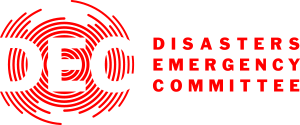
ResourceSpace has changed the way the DEC uses content, making it much easier for us to quickly make assets available both internally and externally during our emergency appeals.
Blog
26th November 2020
.jpg)
Content management systems (CMS) and Digital Asset Management (DAM) systems are both used to organise data, but they serve very different purposes.
A CMS will help you to arrange your media as you'd like it displayed on your website. A DAM system is a tool that enables teams and individuals to find their digital assets easily and manage the distribution and versioning of them too.
Your first introduction to a content management system may be when you start to look into building your own website. You may have heard of website building platforms such as WordPress, Wix or Squarespace. These are software applications that allow you to manage the content on your website and put your media in context before publishing. Blog posts, downloadable content and media files such as videos and images will all be displayed on your website with the help of a CMS.
A CMS is necessary whether you're building a static website, an e-commerce store, or an online course. You can use your CMS to edit the pages of your website, add or remove text, images and videos, and change the layout without needing the help of web developers.
The tools and features in a content management system allow you to manage your web content. You can manage permissions to ensure only specific users (developers, content writers and editors, for example) can make certain changes or access more advanced tools. The application is typically linked to a database or a host where your content is stored.
A Digital Asset Management system is where all your digital assets are stored. It ensures all your different teams are using the right versions of assets, that only the right people have access to the right assets, and it also means you can share assets easily with external organisations and individuals.
The DAM system will provide you with an easier way to manage workflows and, in particular, help your marketing department control documents and digital media so there's always brand consistency throughout the business. If changing, adding, or removing files within the DAM requires an approval process, the software allows this by enabling different levels of access and control. DAM systems are typically web-based, promoting collaboration and contribution from users in different locations.
There are various solutions on the market, and each will have a range of features and tools that appeal to specific sectors. You should start your research by identifying your organisation's particular needs and using those as a baseline when evaluating and comparing DAM providers. Check out our Digital Asset Management comparison checklist.
The right DAM will make storing and managing digital assets simple, help boost productivity and create more effective workflows. It's important to consider the interface and user experience too, as this is crucial for a successful onboarding.
ResourceSpace is trusted by companies, non-profit organisations and educational institutions across the world. Our software enables visual brand identity through in-app customisation and a host of features that improve the way you manage and store digital assets. ResourceSpace brings metadata to the forefront of Digital Asset Management, making it easy to find what you're looking for.
Whether you're looking to enhance the security of your digital assets through version control, streamline workflows or improve efficiency, ResourceSpace can revolutionise your organisation's approach to Digital Asset Management.
#CMS
#BrandConsistency
#Marketing
#Collaboration
#BestPractice
#IndustryNews
#ResourceSpaceTips